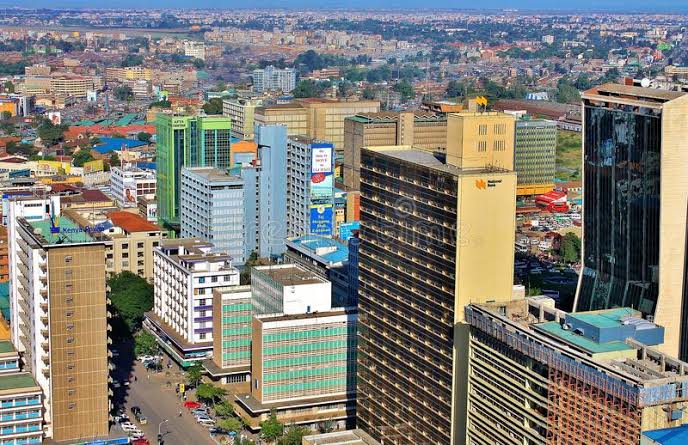How popular towns in Kenya got their names: Have you ever thought of the origin of the names of your town, trading center or even village and how it came about?
Names are more than words that have just been put together, more so African names. Names are part of every culture and have an importance to the societies they come from.
However, some towns in Kenya got their names from corrupted English language by the locals during the colonial and precolonial times.
See how popular towns in Kenya got their names
- Rumuruti
Rumuruti is a town in Laikipia east, Laikipia county in the former Rift Valley Province. The town is 40km north of Nyahururu. The town is on the Nyahururu – Maralal route. Astonishingly enough, the town got its name from this peculiar route.
During colonial times, white settlers referred to the road as a “Remote route”. However, this name was too hard for the local folk in Kenya to pronounce.
The corrupted english words grew on the people and they embraced the name “Rumuruti”. Up to date, the town’s name has never changed since its assimilation by our elderly predecessors.
Here’s a fun fact about Rumuruti: It was the site of a huge meteor shower that happened on January 19th, 1934. ‘Heaven Stones’ also known as Rumuruti chondrites are a rare group of meteorites that graced the region back in the days.
Due to the rarity, collectors visit this remote Kenyan town hoping to get a sample of this rare meteorite rock.
According to Astrophysicists, there is nothing similar to the Kenyan rock as NASA scientists tend to believe the Rumuruti rock comes from a meteor originating from Outer space.
- Thogoto
Thogoto is a place situated in Central Kenya. It is home to Thogoto mission, the cradle of education in Kenya. In earlier times, the area spawned the Alliance schools and was true to its original mission the Church of the Torch – in 1928.
The town got its name from the Church of Scotland Mission which was the first mission to settle in the town near Kikuyu in Kiambu county.
As a result of the influence that Scotland mission had, the local Kikuyu community could not pronounce the name Scotland easily. They went on to pronounce it as “Thigoto” and thus the name Thogoto was born.
To this day, the area has not changed its name and PCEA Church of Torch remains one of the oldest mission churches still standing.
- Dagoretti
This is a town in the western part of Nairobi. Europeans such as Fredrick Lugard arrived in the area in the late 1890s. The area was originally known as The Great Corner and was part of the rich food-producing Kikuyu areas populated by Kikuyu and Masai people.
However, the Africans could not pronounce the name correctly and the corrupted english version of the area’s name soon became “Dagoretti Corner”. The area was the site of the first airfield in Kenya and today it harbors Kenya’s largest Meteorological department.
- Kabarnet
This is a town in Baringo County, Kenya. It is named after a missionary from Australia, Albert Edmund Barnett who came first to central Kenya in 1908. Ka is a Kalenjin word that means homestead.
Thus the Tugen people referred to Barnett’s place as Kabarnet meaning ‘Barnett’s homestead’. Thereafter, Kabarnet grew as the administrative Headquarters for Baringo County.
- Tenwek
This is a small town that lies in Bomet central. It hosts one of the oldest hospitals in the region and Kenya overall (Tenwek Hospital), built-in 1936. The name Tenwek came about after there was a belief that it took ten weeks to travel from Mombasa to the area by foot.
- Roysambu
Roysambu is one of the seventeen constituencies of Nairobi located along the Thika superhighway. It was originally known as “Royal Suburbs” during colonial times.
The Africans in Nairobi at that time experienced difficulty in pronouncing this therefore they decided to call it “Roy-Sabu” and over time the Kenyans changed the name to Roysambu. Hence how the present-day administrative area got its name.
- Kirigiti
Kirigiti is an area in Kiambu County. In colonial times, there was a popular cricket field where the white settlers would visit to play after coming from the surrounding farms.
The Kikuyu community in Kiambu were unable to pronounce the name cricket adequately and they opted to call it Kirigiti. Kirigiti stadium is corrupted English for Cricket stadium.
Just before the declaration of the state of emergency in 1952, Kirigiti stadium hit the headlines when Jomo Kenyatta held a protest meeting there.
- Kariakor
During WWI, Africans were recruited by the British army to carry their luggage. The carrier corps carried everything the soldiers needed to survive during the East African Campaign for the First World War.
Their base was in Nairobi around the present-day Kariakor area. The locals simply called the place “Carrier Corps” and with a local dialect influence, it sounded like “Kariakor”. This is because of their corrupted english.
The Small Claims Court: Easy, Legal Way to Handle Friends Refusing to Pay your Debt
Today it is still called by that name. To commemorate the Carrier Corps’ brave deeds during WWI and WWII, a statue of them was put up along Kenyatta Avenue, Nairobi.
- Msongari
This is an area that is located in Nairobi’s Lavington area. The name originally was Muthangari and an area in Lavington still retains that name. The name was tough for the settlers to pronounce and therefore they decide to call it “Msongari”
- Kitisuru
It is a suburb of Nairobi. It gets its name from a nearby river “Gitathuru” which was borrowed from the original inhabitants of the area who were mainly of the Kikuyu dialect.
The white settlers decided to corrupt the local dialect and use what was easier for them to pronounce which birthed the name “Kitisuru”. The original name is still retained in marginal areas of the city.








